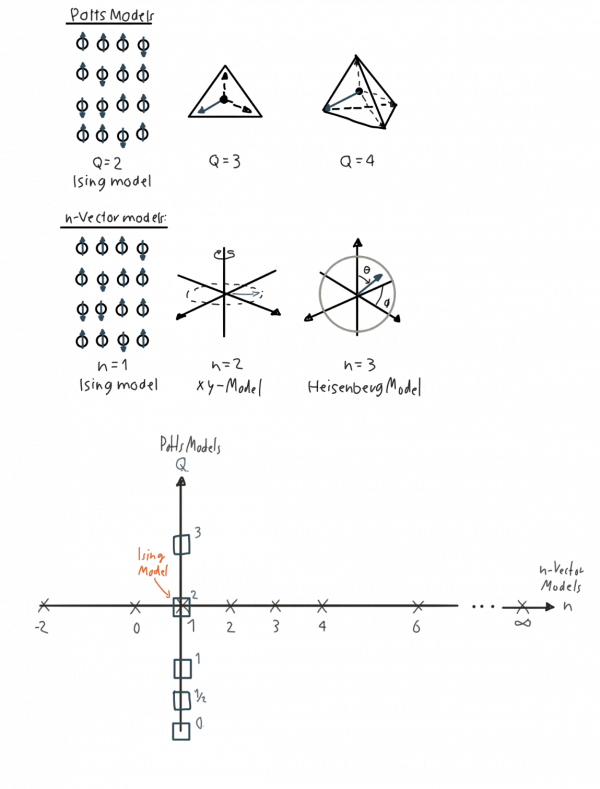Add a new page:
This is an old revision of the document!

Spin models can be classified depending on how many different states are possible at each lattice site and if the set of possible states is continuous or discrete.
Within these subcategories we have different models depending on how many states there are in total. For Potts models, the number of orientations that are possible is denoted by $Q$. For n-vector models, the dimension in which the continuous set of states live at each node is denoted by an $n$.
For $n=1$ and $Q=2$ the two types of models overlap and this special model is known as the Ising model.
"Empirically, one finds that all systems in nature belong to one of a comparatively small number of such universality classes. Two specific microscopic interaction Hamiltonians appear almost sufficient to encompass the universality classes necessary for static critical phenomena.
[…] [T]he Q-state Potts model (Potts, 1952; Wu, 1982) [and] the n-vector model (Stanley, 1968).
Scaling, universality, and renormalization: Three pillars of modern critical phenomena by H.Eugene Stanley
Phase transitions are a central theme of statistical mechanics, and of probability more generally. Lattice spin models represent a general paradigm for phase transitions in finite dimensions, describing ferromagnets and even some fluids (lattice gases).Lectures on the Ising and Potts models on the hypercubic lattice by Hugo Duminil-Copin